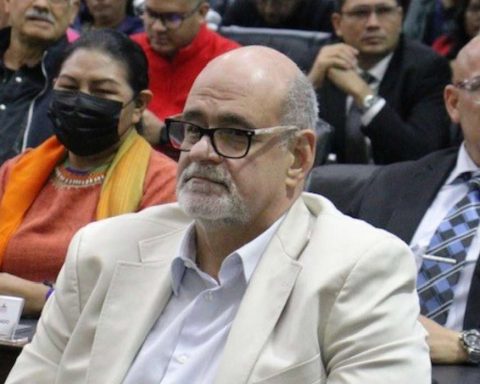Despite the optimistic figures presented by Chavismo regarding the unemployment rate below 10% by the end of 2022, an Equilibrium CenDE survey indicates that only 44% of the population would be part of the formal employment sector
Part of the Venezuelan economic crisis is explained through the purchasing power of its population, with wages submerged in misery that prevent more than 93% of Venezuelans from satisfying their most basic needs: food.
A survey applied to more than 1,275 people by Equilibrium – Center for Economic Development (Equilibrium CenDE) indicates that only 7% of the Venezuelan population generates income of more than $350 per month, an amount that with great difficulty could cover —and not totally— the Family Food Basket measured by the Venezuelan Finance Observatory (OVF), with a value of $390 for the month of March.
The results of the study, carried out on people of all age groups throughout the country, indicate that 7% of the Venezuelans surveyed do not receive income, while most of the country, 51%, generate income of less than $100. Another 23% are in the $101-$200 segment, followed by 13% in the $201-$350 range.
The highest income groups among those surveyed correspond to “high” incomes of $351 to $550 for 5% of the respondents and compensation greater than $551 for 2% of the responses.

The salary ranges also reveal a salary gap between men and women, since women only have a percentage higher than men in the categories of “no income” and “very low income”. In the case of all the other groups, over $101 per month in remuneration, there are more men than women.
The precarious income situation creates problems for the economy and consumption levels in the country. Without demand – that is, buyers – there are no sales and therefore the companies that generate goods and services cannot obtain enough income to increase their production and even if they did, this increase would not find a counterpart to buy, because consumption levels are on the ground.
*Read also: Rector of the ULA on salaries: We have staff who are paying to work
The study reveals this situation, since the answers indicate that only 9% of the population can afford to save, despite the fact that saving is a vital element of any healthy economy that allows more prominent investments and improves the quality of life.
As if that were not enough, within the 9% of those surveyed who claimed to save part of their salaries (some 112 people), almost half of the responses, 43%, correspond to the highest income group, of $550 or more, an amount that allows them to cover their essential expenses and allocate a fragment of their income to savings.
The rest of the population prioritizes spending on food, telephony, transport and services, in order of importance. Health, education, entertainment and housing are in second place.

Unemployment and informality dominate in the survey
Another important component of the survey was to determine the working population. The responses made it possible to reaffirm that the situation of formal employment in the country is precarious, since there continues to be more informality and unemployment, despite the fact that President Nicolás Maduro affirmed at the end of 2022 that the unemployment rate in Venezuela fell to 7.8 %.
The survey data glimpse a reality that is very different from that 7.8% celebrated by Chavismo, indicating that only 44% of those surveyed are part of a formal job and are considered salaried employees. Another 22% also performs some productive activity that generates income, describing themselves as “own-account workers.”

Among the groups that are not completely unemployed are students (14%), retirees or pensioners (13%), and unpaid domestic workers (4%)—female, since all responses in this category corresponded to to women—, while 10% of the participants classified themselves as unemployed looking for work, added to 3% of unemployed who are not looking for work. The list culminates with 2% under the category of “other condition”.
The study also indicates that the private sector is the main employer in the country, even in a context of so much informality, since among the working population, 42% are located in the private sector, compared to 34% of independent workers and a 32% in the public sector, with the State being the weakest link in employment, both in terms of income and jobs.

The employment data also emphasize the gaps between men and women, since work tends to favor the male sex, while unemployment is more pronounced in the case of the female sex.
*Read also: Mercado de los Corotos: the depressed informal trade mosque struggles to survive
The survey highlights that there is a total gap of 19% favorable to men in terms of work activities. 76% of men have formal employment, while only 57% of women are listed as employed.
Post Views: 1,860


![[VIDEO] First releases of political prisoners: Enrique Márquez and Biagio Pilieri meet with their families](https://latin-american.news/wp-content/uploads/2026/01/VIDEO-First-releases-of-political-prisoners-Enrique-Marquez-and-Biagio-480x384.jpg)













